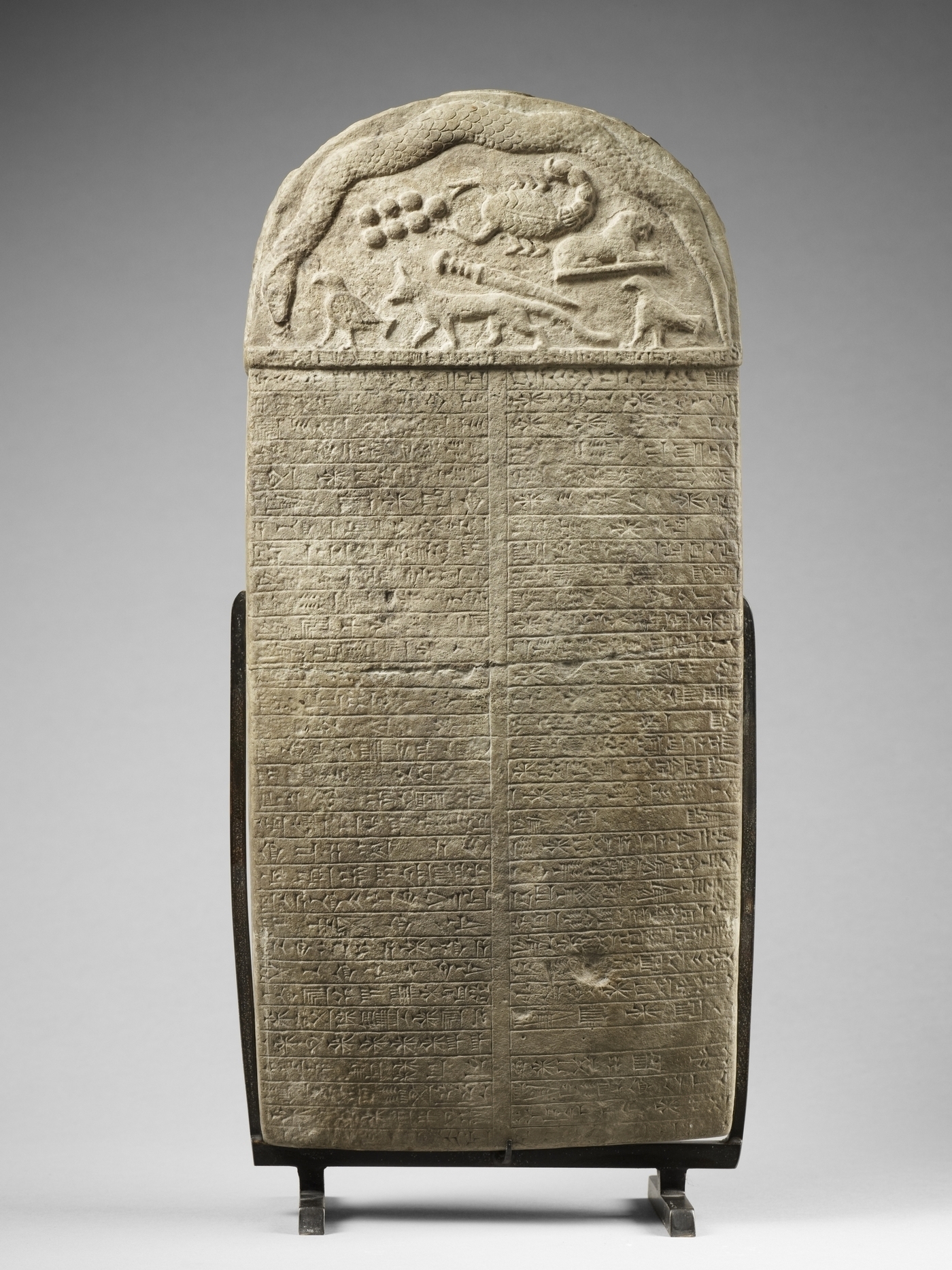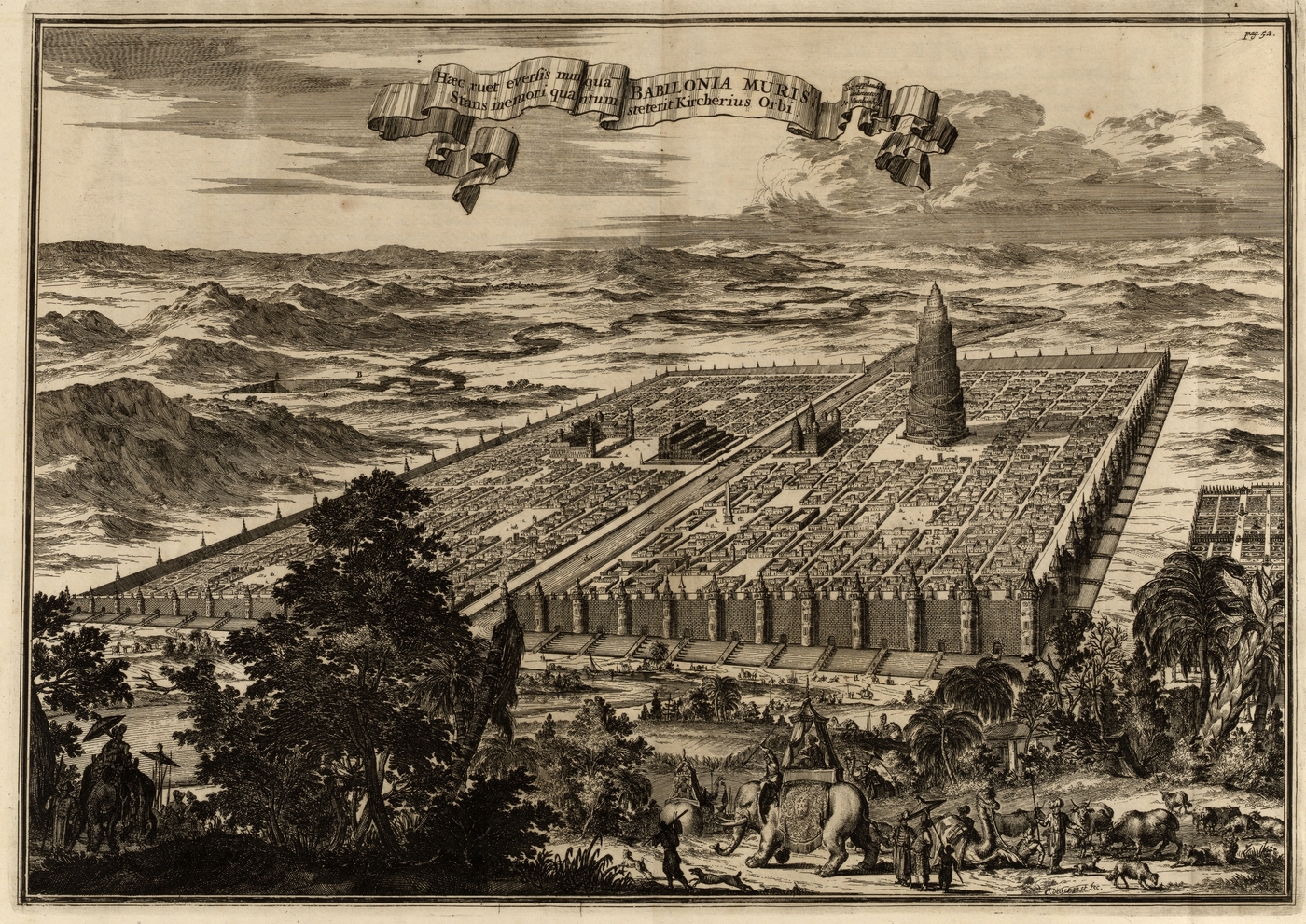Babylon
In the 1st millennium BCE, Babylon was the largest city in Mesopotamia, and its ruins cover an area of 1,000 hectares. The religious and political capital of Babylonia, it was home to the royal palace and the temple complex dedicated to Marduk, the patron deity of Babylon and chief god in the pantheon.

The first evidence for Babylon, which in Akkadian means “Gate of the Gods", dates to the 3rd millennium. The stratigraphy for the period when Babylon was the political capital of the kingdom of Hammurabi (1792-1750) has not been excavated due to the city’s high water table.
History and appearance of a legendary city
At its peak under Nebuchadnezzar II (604-562), the city was concentrated within its walls, with an inner and outer enceinte and eight gates, including the celebrated Ishtar Gate, reconstructed at the Pergamon Museum in Berlin. Babylon was crossed by the river Euphrates and had ten districts.
The temple complex dedicated to Marduk, patron deity of Babylon and chief god in the Babylonian pantheon from the end of the 2nd millennium, stood in the centre of the city. The complex included the Esagil temple (“Temple with the high summit") and the ziggurat of Etemenanki (“Temple connecting the sky and the earth"), which has passed into posterity as the Tower of Bable in the Old Testament.
Every year, the city celebrated the festival of Akitu, during the first twelve days of the year, from March to April. It marked the return of spring and honoured the god Marduk, and his divine son Nabu, god of Borsippa and a major neo-Babylonian deity.
The palace complex in the north of the city was composed of two buildings on either side of the wall. According to some classical authors, Nebuchadnezzar II may have planted the gardens in his palace for his queen Amytis, although there is no archaeological or epigraphic evidence for this. Since then, archaeologist believe the Hanging Gardens" of Babylon were more likely to have been in Nineveh, Assyria, in the palace of King Sennacherib.
Babylon was severely damaged during the US invasion of Iraq in 2003, but may soon be inscribed on the World Heritage list.
Research at Babylon
The location of Babylon has always been known. After the area was surveyed in the 19th century, the first excavations were carried out by Robert Koldewey (1899-1917) for the Deutsche Orient Gesellschaft. Italian teams in 1974, and Iraqi experts in 1979-1980 contributed greatly to our understanding of the site.
The collections of the Department of Near Eastern Antiquities of the Musée du Louvre include several objects from Babylon, such as the "Lion passant", but the largest collection from this site is held by the Vorderasiatisches Museum in Berlin.
Combating the theft and illicit trafficking of cultural property is one of the priorities of the French Ministry of Culture, which pays close attention to these issues, in line with its regulatory responsibility to control the movement of cultural property.
Learn more:





